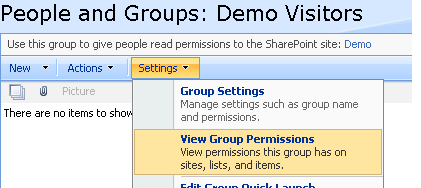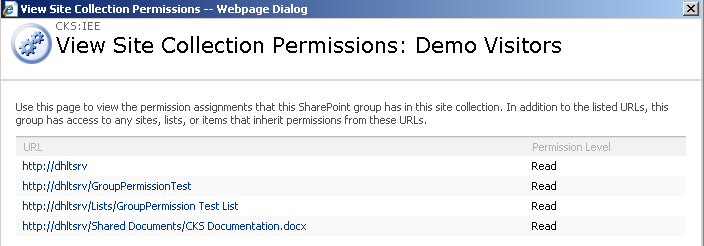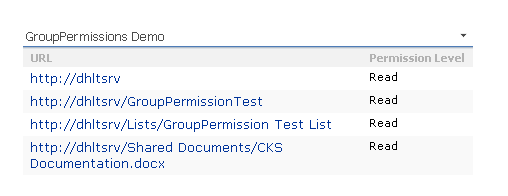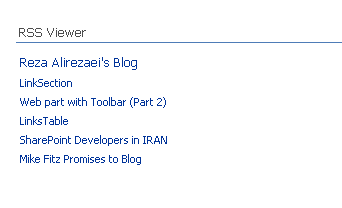I was reading Mike Walsh‘s new book Teach Yourself SharePoint 2007 in 24 hrs over this weekend. A fantastic book for beginners and intermediate users who quickly want to get some brief understanding of the some intresting SharePoint topics.Well, I read/scan read every SharePoint book that comes to the market and I don’t care about the audience. It’s amazing how every single book has something new to offer. Don’t let them slip under your radar , no matter how good you think you are!
Although Mike doesn’t get too deep into the discussions (and that’s because of the nature of the book as everything must be wrapped up in 24 sections), I guess he has covered a good chunk of information and lots of leads on intresting topics not covered anywhere else.No fluff , simple wordings, lots of screenshots and real world content are all among the most obvious positive characteristics of his book. I must say Good job to my fellow MVP! I am very impressed by your book.
Chapters in Mike’s book that really caught my eyes:
Hour 13 and Hour 14 where he talks about WSS 3.0 Search and leveraging Search Server 2008 Express.
Hour 17 and Hour 18 where he presents OneNote 2007 and Access 2007 Integration with SharePoint.
In short, You can use Access 2007 to report against SharePoint lists. Bascially any SharePoint list can be stored as an Access 2007 *table*, so ineasted of connecting to the lists.asmx Web service (for example in your Reporting Services data source) , you bascially get Access 2007 reporting facilities to report against that list (some restrcitions apply). Needless to say that joins are working nicely too! . Finally reverse operation is also doable: You can add an access table to a SharePoint site as a list.

TechDays 2008 is the Microsoft largest technical education conference series for IT Professionals and Developers in Canada. I am pleased to announce that I will be presenting the ONLY SharePoint related session at this important event. Getting back to my technical background and after almost three years of the good old days of being a SQL Server Reporting Services MVP, I will be presenting the following topic:
Information and Collaboration in One Place – Integrating SQL Server Reporting Services with SharePoint
Learn how to extend Microsoft Office SharePoint Server (MOSS) 2007 with the power of SQL Server Reporting Services to integrate rich reporting into the SharePoint portal Server, Report Center or dashboards. You will see how SQL Server Reporting Services enables end-users to view, create, manage and deliver enterprise reports through one centralized user interface of SharePoint via deep integration with MOSS 2007 and Windows SharePoint Services (WSS) 3.0. You will find out how to manage and secure reports using the SharePoint security model, as well as learn about the new features of SQL Server 2008 Reporting Services and MOSS/WSS integration including data-driven subscriptions, passing report parameters on the URL and others.
If you want to hear about this topic on 30th of October (2nd day of the conference) in Toronto please come along!
Update (Nov 01,2008): It is now confirmed that I will be delivering this presentation in Winnipeg (December 04, 2008),Calgary (December 11, 2008) and Vancouver(January 22, 2009) as well. For more information on the dates and venues click here.
Browse to the People and groups page in site settings and click on one of the existing groups. From Settings menu, choose View Group permissions:

ViewGroupPermissions.aspx page located in _layouts folder is loaded as shown below. The ViewGroupPermissions page is one of few pages which is still stuck in version 2.0 look&feel 🙂

When the above page is loaded, a parameter named ID is passed in (via query string) which is equal to the Group ID of group you just chose.ViewGroupPermissions.aspx page uses a GroupPermissions control and sets its GroupId property to the ID parameter that it receives from the query string.
I have explained in the community content of this page how GroupPermissions control works, but once again I’d like to draw your attention to the last paragraph of what I wrote in the description section:
One thing needs to be highlighted here about the URL column (effective scope) : in addition to the listed URLs, specified group has access to any sites, lists, or items that inherit permissions from these URLs. This means that those URLs won’t be listed by the control, but if you break the inheritance on a securable object and explicitly give the group some kind of permissions, that securable object will be listed in the control. For example, if a list item has fine grained permission set for a given group, meaning that it doesn’t inherit permissions from its parent object (list), the URL to that list item will be shown by GroupPermissions control.
here is the screenshot of the code included. In the Web part below, I am demonstrating how you can use GroupPermissions control programmatically. Please pay attention to the last item. A document called CKS Documentation.docx which has explicit permissions set for the current site’s associated visitors group. I broke the inheritance on this list item.

In WSS object model, there is a family of XML-based data source controls which enable declarative or programmatic databinding models against a variety of underlying XML data stores. In this family, the abstract BaseXmlDataSource control serves as the base class .It extends HierarchicalDataSourceControl class and implements IDataSource interface to support both hierarchical and tabular data for all derived types. There are three main XML-based data sources that extend BaseXmlDataSource control :
- SPXmlDataSource
- XmlUrlDataSource
- SoapDataSource
*Read the community content in each class for more information.
For example, if you place a RSS Viewer Web Part on a page and sets its RSS Feed URL property , open the page in SharePoint Designer and you would see that XmlUrlDataSource is used as the main data source serving the Web part.
Browse to Central Administration Web site , Operations tab and choose Data Retrieval Service link in the Data Configuration section. As you can see on the bottom of this page, there is a checkbox by which you can enable/disable XmlUrlDataSource, SPXmlDataSource, SoapDataSource or AggregateDataSource data source controls per Web application or globally across the entire farm. Once “Enable these data source controls” check box is cleared , no query requests will be processed by these data source controls. This is a great controling and performace check feature in the hands of administrators to control databinding operations in a SharePoint Web application.

Clear the checkbox and do an iisreset. Then referesh the page containing the RSS Viewer web part and as expected , you will get the following error message.

Check the ULS log and here is the execption thrown by the RSS Viewer Web Part. One of a few pleasant error messages , eh? 😉
RssWebPart: Exception handed to HandleRuntimeException.HandleException Microsoft.SharePoint.WebPartPages.DataSourceControlDisabledException: The server administrator has disabled the Data Source control required to execute this query. Contact the server administrator for more information.








